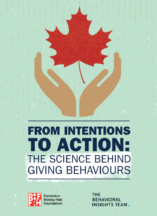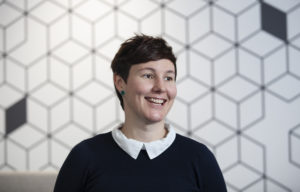Imagine for a moment that you live your life by one simple rule: always make the choice that will serve you best in the long-term. It seems sensible. After all, who wouldn’t want to do everything they can to realize their full potential while improving their health and well-being? Spend a few hours with any human being, though, and it becomes apparent this isn’t quite how we go about things; we over-eat despite knowing it’s bad for us, we spend money to try and appease a bad mood, and when it comes to taking small steps towards long-term goals some of us can’t even get past hitting the snooze button. In fact, even some of life’s most important decisions – saving for retirement, paying our taxes, or looking after our health – get deferred or botched simply because we don’t have the time, attention, or resources to process them properly.
Over the last few decades a body of work has emerged that helps us understand this gap between how we should behave and what we do in practice. These insights on the science of human behaviour, judgement, and decision-making help us understand how we can turn our best intentions into action.
In this report, we look through the lens of behavioural science at the case of charitable giving, pulling together research that tells us what has worked in the past and contributing novel insights from work commissioned by the Rideau Hall Foundation to test this approach in the Canadian context.
In the initial section, we show how behavioural science can help us understand why people give, and how we can apply that knowledge to boost donations. While a marketing approach has used insights from psychology to great effect, helping us design ever more compelling and attractive fundraising campaigns, behavioural science can take us a step further. The behavioural approach asks us to look at the broader processes, decision-points, and actions that happen before and after a pitch – pushing us to consider how we might get someone to engage with an ask for donations in the first place, and nudge people to follow through on an intention once they have been convinced that a donation is a good idea. By taking a realistic view of how and why people act the way they do, we can help people overcome the pull of habit and create new giving routines.
With this foundation laid, we present the work undertaken by the Behavioural Insights Team and the MS Society of Canada to demonstrate how behavioural science can be used to address the practical questions of fundraising. We show that experimenting with new strategies, and testing these new strategies in the field, need not be costly or time consuming. Yet the impact is decidedly non-trivial. Each trial opens a potential new area of inquiry, incrementally moving our understanding forward and building a strong base of evidence over time.
We recognize that we have a truly ambitious goal, and that reinforcing giving as a fundamental Canadian value is not something we can do alone. Therefore, we conclude this project with an eye towards the next phase of the Giving Behaviour Project. Over the next few months, the Impact and Innovation Unit of the Privy Council Office of Canada will be releasing the results of their work in this important area—a series of trials with the Heart & Stroke Foundation of Canada.
We conclude this report with a series of concrete resources we hope will enable charities to apply the insights from behavioural science to their work. We ask that all those interested in promoting a greater culture of giving will help us build a national movement to turn good intentions into action. We hope that the findings presented throughout this report will provide new inspiration to old problems, and encourage organizations to build on the incredible work already being done in the charitable sector and to share their insights along the way.





